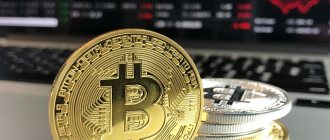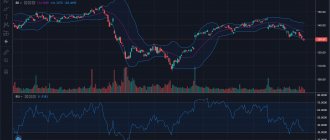Lazy Investor Blog > News
There is a lot of speculation in the media that the main cause of financial crises is the abandonment of the gold standard. The topic of returning to the previous system is also actively discussed. Let's see what is hidden behind this sonorous phrase, and how true are the postulates about its universality.
History of the gold standard
The gold standard is a system in which each banknote is backed by a fixed amount of precious metal. Its classical form allows that any person has the right to freely exchange banknotes for gold coins or bars. In such a situation, the government cannot print paper money in unlimited quantities.
The gold standard was first established in Great Britain in 1821. This allowed the pound to become the main reserve currency. Gold was chosen due to its unique characteristics:
- high cost of a small volume of metal;
- possibility of long-term storage without changing physical properties;
- easy divisibility and unification.
Gradually, all leading countries, including the United States, switched to such a system. But in its original form it existed for less than 100 years. Already during the First World War, European countries suspended the free conversion of banknotes into gold. In America, this happened in 1933, because the government needed to increase the money supply to recover from the Great Depression.
Attempts to return to the previous system after the situation had stabilized were unsuccessful. At first, the minimum exchange amount was limited: only those who were rich enough to buy a 12.5 kg bar could claim gold. Thanks to this, most of the money supply, which was in the hands of insufficiently wealthy people, was cut off from conversion.
Then the exchange for gold was stopped; instead, those who wanted to get rid of banknotes were given so-called. mottos. They were a means of payment and could be converted into metal.
In 1944, the Bretton Woods Agreement was concluded, which fixed a rigid exchange rate for the currencies of 44 countries relative to the American one, which, in turn, was tied to gold in the proportion of $35 per troy ounce. Already at this moment, many countries began to increase their dollar reserves, and the main world supply of gold was moved to the United States. Only central banks of other countries could exchange dollars for metal.
I also recommend reading:
Why do brokers offer a model portfolio?
Is a model portfolio an extra service or a way to make money?
The evolution of the global financial system is shown in the picture below.
Educational program historical
A long time ago, people used a variety of objects, such as shells, as money. And also furs and animal skins. And also cocoa beans...
As a rule, money was used for items that, firstly, were valued among the local population, secondly, were relatively “mobile”, and thirdly, were relatively rare or, if not rare, then very useful in the household. Later, people paid attention to valuable metals and began making metal coins, which we still use today. Why did everyone choose gold and silver over animal skins?
Coins made from precious metals are highly valuable, easy to store, durable, and could be melted down into different items, even melted together or divided into smaller coins. Gold was considered to be resistant to counterfeiting because it could be identified by its softness (malleability), sound, color or weight. In general, it is not surprising that gold has become such a popular means of exchange.
Russian banks are breaking records for investments in gold. Is it time to follow their example?
Abolition of the gold standard
In August 1971, US President Nixon announced that the exchange of dollars for gold would cease. The reason given was the discrepancy between the actual purchasing power of the American currency and the stated exchange rate relative to gold.
In parallel, he took a number of political actions that allowed the dollar to become the most popular unit of payment in the world. First of all, this was achieved through an agreement with Saudi Arabia on the sale of oil only for American money. In fact, a system was formed that was called the petrodollar. Subsequently, other producing countries joined this rule.
The trend was not reversed even in 1973–75, when, due to the military conflict in the Middle East, members of the OPEC cartel stopped supplying hydrocarbons to those who supported Israel. It was the oil crisis, and not the refusal to exchange dollars for gold, that then dealt a blow to the S&P 500 quotes. It lost half of its maximum and recovered only by 1983.
In subsequent years, the dollar issue was unlimited. This led to its devaluation relative to gold. The price per ounce increased from $35 in 1971 to $42 in 1973 and to $850 10 years later. A direct consequence of Nixon's actions was the rupture of the Bretton Woods Agreement and the transition to the Jamaican system, under which countries can choose their own exchange rate regime: floating, fixed or mixed.
Why was gold exchanged for paper?
Gold is, of course, good, but, as it turned out, it also has its drawbacks. For example, you can cut small pieces from coins and then melt them together into something else. The gold in the cut coin will be less than “according to the declared value.” If the coins are lost, then a valuable medium of exchange will disappear from the economy (new gold coins are not easy to make). And, perhaps, the main problem is transporting coins over long distances. First of all, they are heavy. Very. Secondly, transporting gold itself is an unsafe task and, therefore, expensive.
Sergey Altyntsev, private investor, association of experts “Friend of Coins”:
— Gold is the metal of the Day of Judgment. You can use it to buy anything you want when and if the current financial system collapses due to the many accumulated problems.
Pros and cons of ending the gold standard
The consequences of the abolition of the gold standard can be divided into positive and negative.
Minuses
The result of the abolition of the gold standard was inflation. As governments of all countries began to print national currencies on an almost unlimited scale, the purchasing power of money decreased dramatically. There was an opportunity to inflate bubbles and currency speculation. This also led to an increase in the volume of debt obligations. Newly issued banknotes came into circulation through the credit system.
Another negative aspect of the abolition of the gold standard was the breakdown in the correlation between real wages and labor productivity growth. Even if nominal income increased, it did not keep pace with the rate of inflation. This has led to a slowdown in people's quality of life.
With the refusal to back national currencies with gold, the stability of the economy decreased. If a state collapses, the money it issued is completely worthless. It is no longer possible to predict the lower limit of economic decline in the event of a crisis.
I also recommend reading:
What are NFT tokens and do they have a future?
NFT tokens – is it possible to make money on them?
pros
However, there were also positive aspects to the abolition of the gold standard. First of all, this is the acceleration of economic growth. It was the ability to issue the money supply without restrictions and quickly increase liquidity that made it possible to overcome the Great Depression at one time. These same actions helped smooth out all subsequent crises.
A strict link between the volume of money supply in circulation and the amount of gold accumulated by central banks leads to the fact that production growth provokes deflation. This process, in turn, forces the production of new products to be reduced and workers to be laid off. The refusal to link banknotes to precious metals made it possible to reverse this situation.
The second positive side of abandoning the gold standard was the opportunity to pursue a flexible financial policy. Thanks to this step, central banks can quickly change the value of national currencies. This allows the use of controlled devaluation to reduce the risk of default. It is also used to increase the competitiveness of domestic producers.
Advantages
One of the main advantages, of course, is ensuring the stability of exchange rates. Countries that introduced this system gave impetus to the development of international trade, the volume of which was constantly growing. Exchange rates were easily predicted, and this gave confidence in the strength of trade relationships and the ability to fulfill their obligations. Also, balance sheet deficits were almost automatically eliminated due to the free import or export of gold outside the country.
Risks and prospects of the modern monetary system
The main risk of a monetary unit that does not have a strong anchor in the form of gold remains the possibility of rapid depreciation. At the global level, the currency risk of exporters and importers plays a key role. It is due to free exchange rates, which can change quickly relative to each other. In addition, excessive issuance leads to the fact that profits in the market are redistributed in favor of the financial sector. Manufacturers account for a smaller part of it.
However, such a prospect for the development of the world monetary system as a return to the gold standard seems impossible today. This is explained, first of all, by the lack of gold reserves. The following scenarios are more likely:
- the formation of new transnational currencies similar to the euro;
- the emergence in the distant future of a global payment unit;
- an increase in the number of global reserve currencies;
- the prospect of switching to digital money, for example, in the form of cryptocurrencies.
I also recommend reading:
Russian oligarchs: not only loans-for-shares auctions
What do the assets of Russian oligarchs consist of?
What it is
The coin ruble made of gold is a metal monetary unit of the Russian Empire introduced into circulation in 1897.
Imperials and semi-imperials were in circulation in Russia along with silver metal money and paper credit notes since 1843, but were used more often as a special currency for foreign trade. Only after the reform of Count Sergei Witte was gold introduced into internal circulation in the country.
A Brief History of the Introduction of the Gold Standard in the Russian Empire
In the middle of the 19th century. The Russian Empire had a bimetallic monetary system. The royal treasury contained equal amounts of silver and gold. But the paper ruble was more tied to silver.
As a result of the crisis that followed the Crimean War in 1858, credit notes lost their security - the state treasury stopped exchanging them for metal coins. It became clear that bimetallism with a tendency towards silver monometallism could not continue to exist, and by the end of the 19th century. monetary reform is overdue.
The Minister of Finance of the Russian Empire, Sergei Witte, having analyzed the single currency system of the leading industrial countries, placed a bet on gold. And I was not mistaken. The introduction of precious coins into internal monetary circulation gave the country the necessary economic stability. The rapid growth of industrial production in pre-war Russia and the more than doubling of the empire's gold reserves provided the Russian ruble with a stable footing.
Such a system in Russia existed until the beginning of the military mobilization of the districts bordering Austria-Hungary, when more than half a billion gold rubles suddenly disappeared from circulation, sinking into the numerous hiding places of ordinary people.
Gold ruble in Soviet Russia
In 1922, the People's Commissar began minting Soviet chervonets of 900 standard, which again stabilized the ruble exchange rate. The content of pure gold in one chervonets is 7.74234 g.
Flaws
There is no financial system that does not have its shortcomings. This also applies to the gold standard, which, unfortunately, limited the maximum possibilities for economic growth by the volume of reserves of this metal held by the state. There is also a risk of significant depletion of such strategic reserves if the demand for foreign currency exceeds supply. This made states potentially vulnerable.











